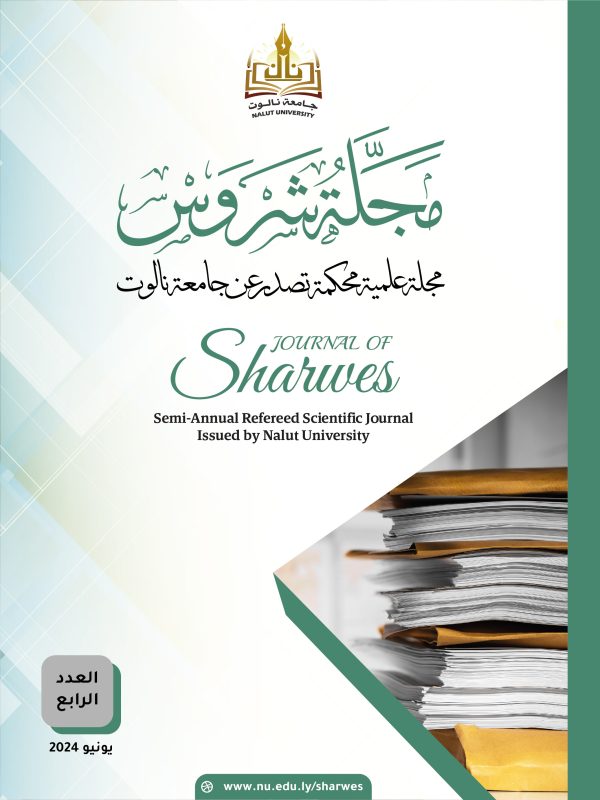واقع النفايات المنزلية في مدينة هون الليبية دراسة في جـغرافية الـبيئـة
DOI:
https://doi.org/10.26629/jjx50j02Keywords:
التلوث بالنفايات المنزلية- جغرافية البيئة - النظام البيئي- التلوث البيئيAbstract
The study aims to reveal the reality of household waste in the Libyan city of Hon. This study is also one of the fields of environmental geography. The importance of the study lies in the fact that the study area suffers from an increase in household waste, and is dominated by a semi-desert climate on the northern side and desert on the southern side, which helps to increase pollution rates. In the region, one of the reasons that made the researcher consider this topic is the urgent desire to know the reality of household waste and the role of the geographical factor in increasing or decreasing the rates of household waste pollution in cities.
Because of its severe risks, it increases pollution rates, which affects public health and economic activity. Therefore, the research problem centers on the impact of natural and human factors on the region, identifying waste, its effects, and methods of disposal, and showing the size and type of waste in the region and methods of disposal. The role of geography in dealing with environmental phenomena.
The importance of the research topic is summarized in explaining the reality of household waste in the city of Hon, since the city lacks this type of special research. The research was conducted relying on several approaches, including - historical, descriptive, analytical, and a questionnaire form. The study concluded with a set of results, including:
Climate elements have a negative impact on household waste, as they lead to the fermentation of the garbage and then the spread of putrid odors, in addition to the spread of insects that transmit diseases to the population.
- The population numbers in the research area are constantly increasing, but they vary from one census to another.
- Waste causes soil and water pollution, as well as the emission of unpleasant odors as a result of the garbage containing a high percentage of organic materials.
- Failure to collect garbage and its accumulation in the streets, squares, open squares, beaches, forests, villages and cities leads to corruption of the aesthetic character - Methods of waste disposal are sanitary burial, burning, and conversion to organic fertilizers.
- The quantities of waste produced in the city of Hon vary in type, quantity, and time
The difficulties are represented in the lack of containers, there are mechanisms for transporting waste, and the lack of a nearby place that is reported to be incompatible with the passage of public sanitation vehicles








